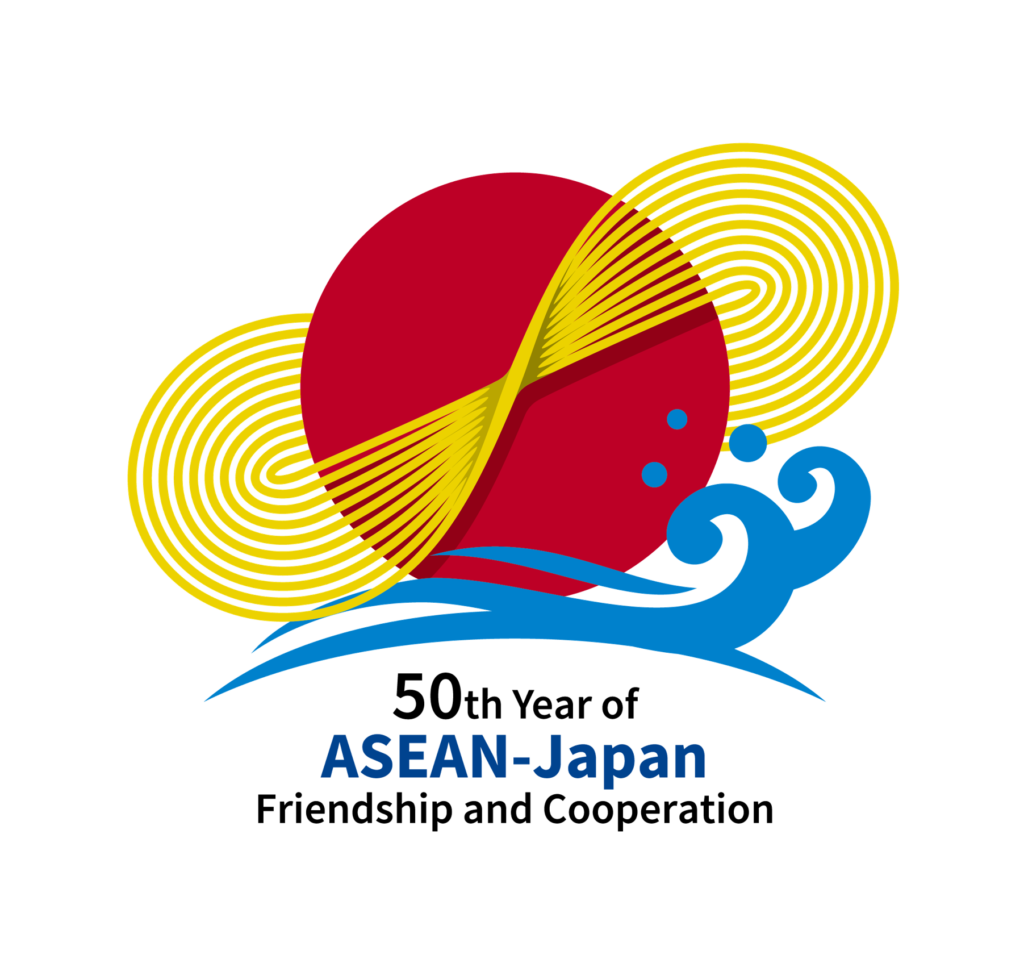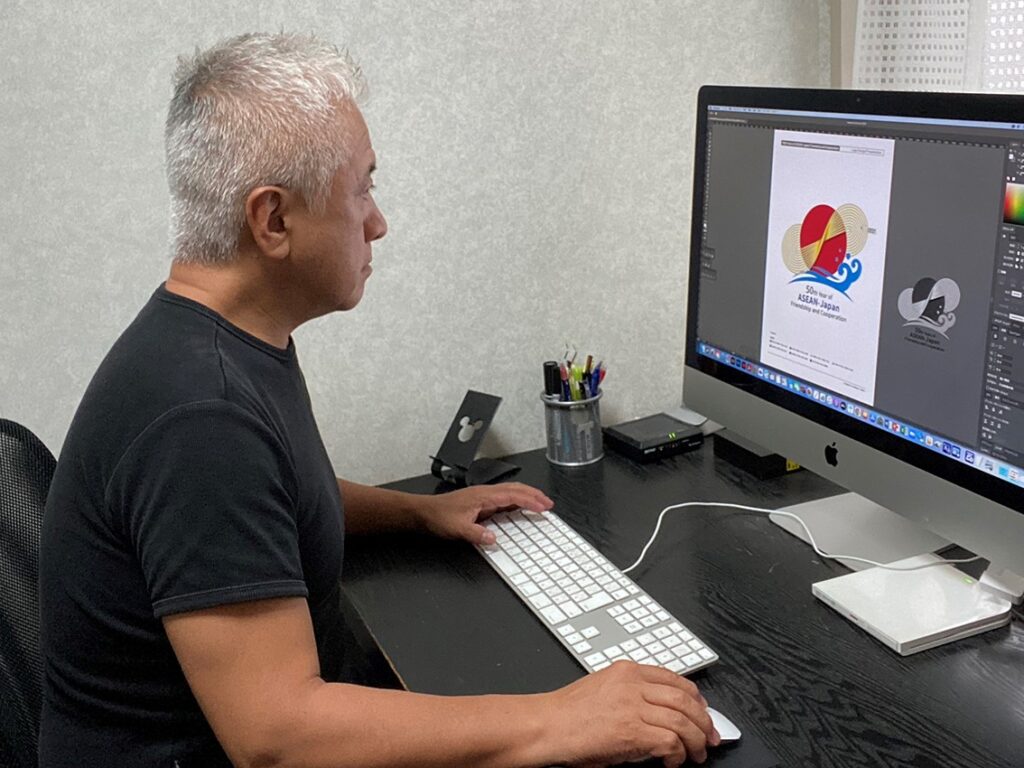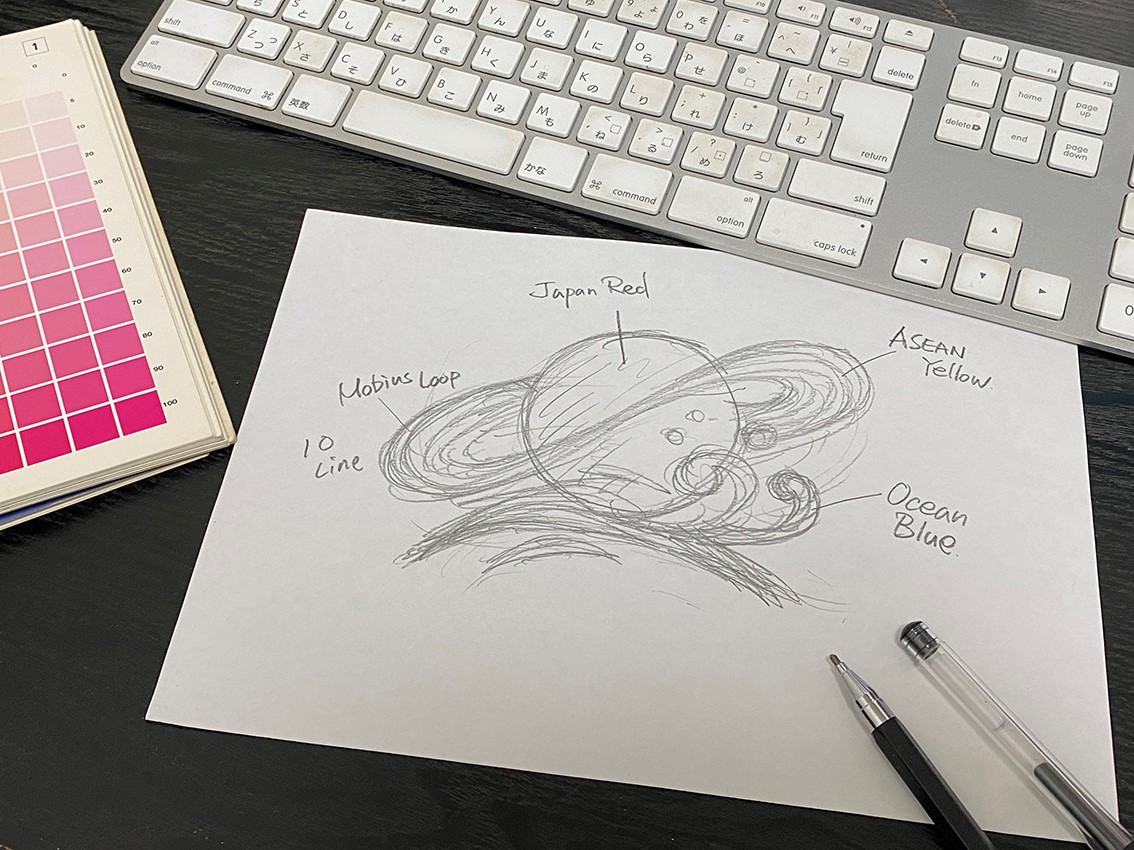Masaya Tanabe’s work has been selected as the official logo for the 50th Year of ASEAN-Japan Friendship and Cooperation in 2023. Masaya is a graphic designer. We asked him what motivated him to join the “Logo Design and Catchphrase Contest for the 50th Year of ASEAN-Japan Friendship and Cooperation” as well as the concept of the logo and the behind-the-scenes story of its development.
My wish for the long-lasting ASEAN-Japan relations incorporated in the padi stalks

The logo was chosen from a total of 393 entries from the general public of the ASEAN Member States and Japan by the Mission of Japan to ASEAN and Permanent Representatives to ASEAN from the ASEAN Member States in Jakarta.
I was on a family trip to a hot spring when I was informed that my work had been shortlisted. I was very surprised, but I told myself like “I shouldn’t get too excited about it, it’s just being shortlisted,” while soaking in the hot spring. After that, when I heard that my logo won the contest, I was so happy. The logo I developed through trial and error was accepted and I felt great as a designer. My designer friends were also like “wow!” and praised me, and I felt proud.
What did you have in your mind before developing the design?
I decided to enter for this contest since the logo would be used internationally and for that I thought it would be a challenge worth taking. As a designer, you tend to think how you can make something extraordinary that no one can think of. However, I learned through the website of AJC and others that people between the ASEAN Member States and Japan are working together as one despite all the differences such as languages, lifestyles, cultures, and religions. Then I thought that the logo shouldn’t be complicated but simple that can easily convey the meaning, which diverse people with various differences can use together.
How did you develop the design?
In the design, I knew I wanted to incorporate the 10 stalks of padi in the ASEAN Emblem from the beginning. When I thought about the future of ASEAN and Japan, I hoped that their relationship would be deeper and stronger and lasts forever. So, I made the stalks of padi in the Mobius strip[1]. The round red circle in the center is from the flag of Japan, and the waves represent the sea that encompasses ASEAN and Japan. I also wanted to add a bit of Japanese flavor to emphasize the role of Japan, so I designed the waves in an ukiyo-e[2] style. In terms of colors, I wanted to use the colors from the flags of ASEAN and Japan. I used the red from the Japanese flag, the gold from the stalks of padi from the ASEAN Emblem.
[1] Mobius strip symbolizes infinity.
[2] Japanese woodblock prints.
Impressed by the diversity of ASEAN countries that accept different cultures
Have you had connections with ASEAN countries until now?
I have been to Kuala Lumpur (KL) and Langkawi in Malaysia and Bali in Indonesia. In terms of work, I had an acquaintance who wanted to start a business in the ASEAN region, and I helped him with some design work. Also, there was a Japanese NPO working for the people in Myanmar and Viet Nam and I designed their logo and helped their work.

What was your impression of the countries you visited?
Although it’s limited only to the tourists’ spots, I felt that the local people are friendly to Japanese people. It was easy to communicate with them even with my broken English. I also got an impression that they are better at accepting other cultures than Japanese. For example, when you look at the design of the hotels in Bali, there are traditional ones to very modern ones incorporating European style, and the restaurants are multicultural, too.
Also, when I visited KL, I was astonished by the diversity of its people and culture. There are Little India and Chinatown. The food culture is also diverse. I had never seen a city with such a rich and diverse mix of cultures, so I was very moved. I thought there are many things Japan can learn from ASEAN in terms of developing while accepting various cultures. By the way, I still keep in touch with the people I became friends with during those trips.
Understanding and accepting one another for further development
What does “friendship between ASEAN and Japan” mean to you?
Japan is facing problems as an aging society, and the same time, many young people from the ASEAN Member States are coming to Japan to study and work. However, unfortunately, I think that Japanese people’s knowledge and understanding of the people and culture of ASEAN is still weak. I believe that getting to know each other is the first step to getting along, so that it is important for Japanese people to know, understand, and recognize the culture and religions of people from the ASEAN Member States. It would be great if economic and cultural exchanges are further developed along the way. Nowadays, I see many people from the ASEAN Member States working in my neighborhoods. I hope that I can I do something to help those people from here on.

Masaya Tanabe
Since 1997, Masaya runs a private graphic design production office, TDO Tanabe Design Office. He has created designs such as logos and illustrations for government agencies, national universities, pharmaceutical companies and other companies, stores and individuals.
Interview & writing / ASEAN-Japan Centre
Photos: Masaya Tanabe


